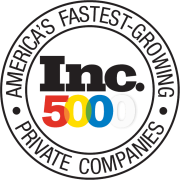At the center of America’s supply chain problem is (though not exclusively) the ongoing shortage of workers. To quantify it, let’s look at recent numbers: in June, there were 5.5 million more job openings than available workers. As a result, employers are faced with the challenge of filling those positions. The solution? There isn’t a simple one–but adding value to your current team is an effective approach. You can borrow training models from larger companies, focusing on both new technology and hiring strategies.
Borrow training models.
We know what you might be thinking: how can a small or mid-sized company afford to adopt Amazon’s or Walmart’s training programs? It’s true that we’re not comparing apples to apples in terms of budget. However, you can identify the key components of their training models. And then implement a scaled-down version that works for you. An article published by the MIT Sloan School of Management recommends a boot-camp-style approach commonly used by larger software development companies for robotics training. More specifically, opt for a “hands-on, concentrated approach that upskills in a much shorter time period than traditional educational curriculum”.
Because of its versatility and scalability, boot camp training is attractive to companies of all sizes. Duane Graupman, vice president of global operations and supply chain management for Xylem believes in this training model. Speaking of his problem, Graupman is frank: “It’s been really difficult to find the skills and maintenance technicians to work on the robotics machines and keep them operational.” But he–along with other manufacturing companies throughout the country–see immersive training as a wave of the future.
Integrate new technologies.
In particular, increasing the amount of automation in your manufacturing facility can help you manage the mass employee shortage. And the nice thing about adding automation is you can do so with any budget–and it enables you to actually grow your business.
Robotics is one type of automation that doesn’t have to break your budget. Poplar Manufacturing in Chicago hired a robot employee to perform one simple, repetitive task: picking up a piece of metal, placing into a press, and bending it into a programmed shape. The cost of this “employee”–who performs an essential duty–costs Popular Manufacturing $8 per hour. Furthermore, Poplar Manufacturing doesn’t have to worry about employee resignation for this position.
We mentioned the savings. Compared to a $15-per-hour minimum wage, the $8-per-hour robot also has helped them cut costs almost in half. “Anything that can help reduce labor count or the need for labor is obviously a plus at this particular time,” says Steve Chmura, chief operating officer at a confectionary company in Illinois. But the use of robotics helps them save money and scale the company, freeing up current employees for different work. And increased revenue can support future growth.
Choose quality hires.
The bottom line is that a high percentage of employees are resigning. In 2021, 47.8 million workers quit their job–about 4,000 every month. And a Willis Tower Watson survey revealed that approximately one-third of new hires will resign within two years–so it’s necessary to have good hiring practices.
In light of this, you’ll need a pipeline of qualified candidates for open roles. Developing a high-quality talent pool requires a skilled recruiting company. At PeopleLift, we’ve helped our clients hire over 10,000 employees. For one client, this meant generating almost 60 interviews in the first two months.
But quality hiring takes strategy throughout every stage of the process. That’s why we’ve developed software that can streamline your career page, make job listings accessible to top talent, and create a successful hiring process. And Executive Search, Temporary Labor (contract), or Direct Hire, our RPO service stack is at the core of it–shaping the future of talent acquisition.
We’ll also connect you with quality hires through AI-powered technology. From custom strategies to expert sourcing, we can build your talent pipeline based on several key factors: the role you’re hiring for, your industry, your location, and more. With hires that fit your criteria, you can feel more confident throughout current labor challenges.
The bottom line.
Finding and keeping quality employees during a time plagued by supply chain issues–especially the labor supply–is a big ask. Engaging with talent year-round will allow you to reap both short- and long-term benefits when it’s time to hire. Using a combination of AI and human strategy, we can help you reach quality candidates in an affordable way. And once these workers are onboarded, we can build custom solutions that set you up for success. Discover the PeopleLift Difference Today – Contact us to schedule a no-obligation Discovery Call and get your FREE Comprehensive Talent Marketplace Assessment!





